Tulips are easy to grow plants that brighten your garden with colorful flowers. We all want healthy and beautiful tulips, but sometimes garden conditions may not be ideal for them, which stops their growth.
And if you are also struggling with the growth of your tulips then this article is for you. In this article we shall discuss why did my tulips stop growing and how can we fix the same.
Inadequate sunlight, too much or too little water, wrong soil mix, pests, and diseases are the primary reasons for stunted growth in tulips. Provide sufficient light, water the plant only when the topsoil feels dry, and fertilize the plant in the growing season to encourage new growth in tulips.
If you want your tulips to grow back, you first need to identify the problem they face and then take steps accordingly. Your plant will keep growing well if you fulfill all its fundamental requirements in time and take care of them properly.
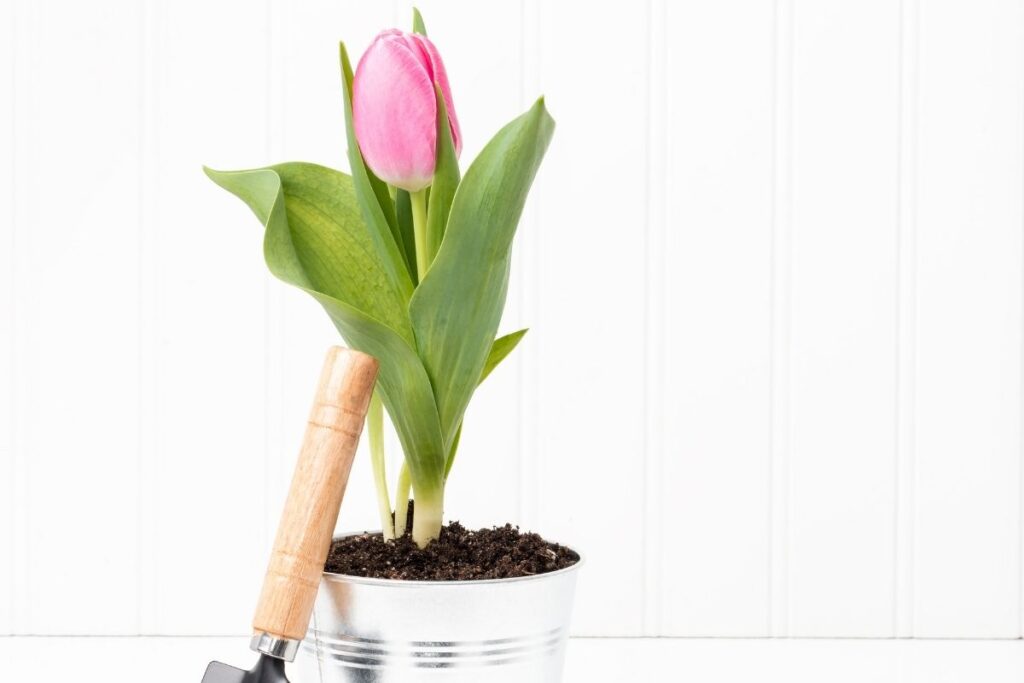
How fast do tulips grow?
Tulips are fast growers; they are grown from bulbs that flower in the spring and die shortly after. However, some tulips can come year after year if the growing conditions are similar to their natural habitat.
They grow about 1-3 feet (30-40 cm) tall. However, the size of plants also depends on the variety of tulips chosen.
Wilting is a part of the life cycle of tulips, and it indicates the end of their life.
When they begin to die, they wilt, and the nutrients move back to the bulbs, which are stored safely to prepare for the next season.
When this happens, the petals will start to drop. Naturally, the leaves turn yellow, and the stems droop.
If you find that your tulips have started growing slower than their actual speed, you need to understand that there is something wrong, and you need to take immediate actions to save them.
Why are my tulips stunted?
The growth of tulips depends on the requirements you are providing them. If they lack their basic needs, they won’t thrive and stop growing.
The reasons behind tulips stop their growth are:
- Inadequate sunlight
- Too much or too little water
- Wrong soil mix
- Shallow planting
- Improper nutrition
- Pest and diseases
- Stress
Let’s discuss each point in detail.
Inadequate sunlight
Tulips grow best in bright, direct sunlight. If they don’t get sufficient light, their growth rate will slow down due to a lack of photosynthesis, and they might even stop growing.
Tulips are outdoor plants, and not providing them enough light for an extended period will not allow them to produce enough energy to perform photosynthesis, resulting in declined growth.
Insufficient light will offer very little energy, and therefore, the plant will become leggy and spindly in search of light. They will stop producing blooms and will have fewer leaves.
In such cases, you may need to relocate your tulips to another location where they’ll receive enough sunlight.
Also, tulips don’t prefer too intense sunlight. Intense sunlight can dry them quickly and lead to yellow leaves, brown spots on leaves.
Excessive heat will also dry out the soil, and the tulips will start losing moisture from their leaves, eventually losing all their nutrients.
They will require shade to save themselves from the sun in hot and dry conditions.
Improper watering
Tulips need a proper watering schedule for healthy growth, and improper watering will never allow your tulips to thrive properly. Both overwatering and underwatering will hamper their growth.
Overwatering
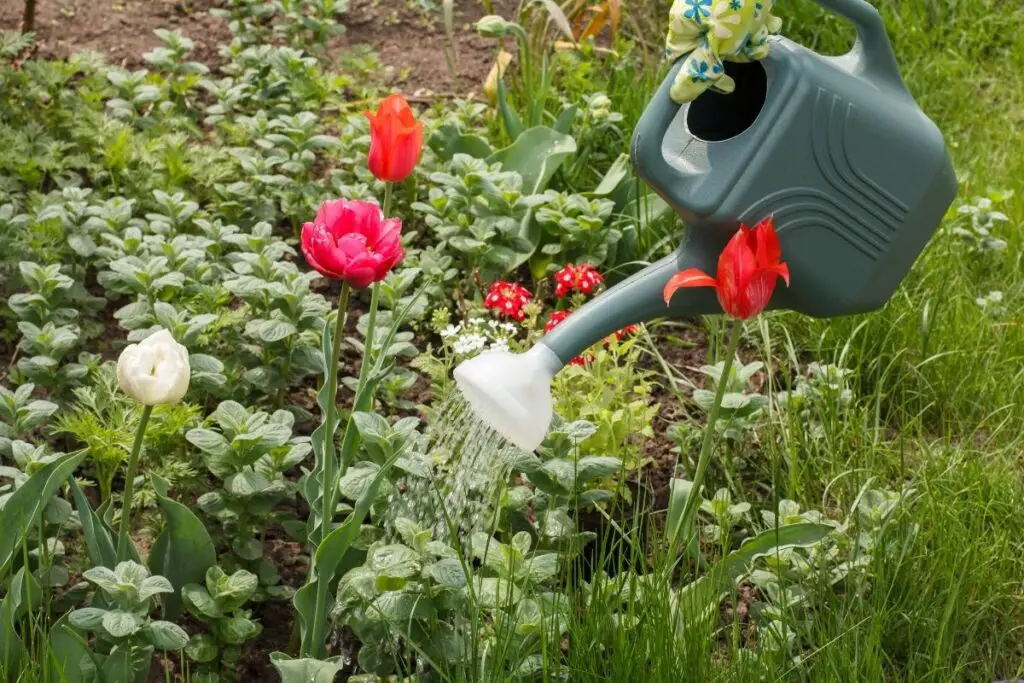
Oversaturation is one major problem that obstructs the growth of tulips. Overwatering or inadequate drainage make the soil soggy, leading to root rot that damages the roots, causing the tulips to stop their growth.
Overwatering is more harmful than underwatering. Tulips can survive a dry spell but won’t sit in soggy soil. Soggy soil will suffocate your tulips’ roots and won’t allow them to breathe.
In such adverse conditions, the plant with root rot inhibits its ability to absorb nutrients from the soil, making the plants weak and vulnerable.
Your tulips’ leaves will turn yellow and start wilting due to overwatering.
Underwatering
Tulips require water in a meager amount, but it doesn’t mean that they will withstand water shortage for a very long time.
The roots and bulbs will dry if you underwater them for too long. They will suffer from dehydration and become too weak to absorb nutrients and soil and roots.
Underwatering will cause the leaves of tulips to become dry, crispy, and yellow leading to slow growth.
Looking for gardening supplies? We have tested 100's of products before recommending them to you guys. Check out our best pick below:
| Image | Gardening Supplies | Best Price? |
|---|---|---|
 Top
Top Top
Top | Raised Garden Bed Kit | Check On Amazon |
 | XLUX Soil Moisture Meter, Plant Water Monitor, Soil Hygrometer Sensor for Gardening, Farming, Indoor and Outdoor Plants, No Batteries Required | No Results |
 Top
Top Top
Top | 82 Pcs Garden Tools Set and Extra Succulent Tools Set | Check On Amazon |
 | Joeys Garden Expandable Garden Hose with 8 Function Hose Nozzle, Lightweight Anti-Kink Flexible Garden Hoses, Extra Strength Fabric with Double Latex Core, (50 FT, Black) | No Results |
 Top
Top Top
Top | Dual Chamber Compost Tumbler | Check On Amazon |
 Top
Top Top
Top | Sunnyglade Plant Stakes | Check On Amazon |
 Top
Top Top
Top | Organic Cold Pressed Neem Seed Oil | Check On Amazon |
 Top
Top Top
Top | Mighty Mint Gallon :-Insect and Pest Control Peppermint Oil | Check On Amazon |
 Top
Top Top
Top | Scotts DiseaseEx Lawn Fungicide | Check On Amazon |
 Top
Top Top
Top | Jacks Classic 20-20-20 All Purpose Fertilizer | Check On Amazon |
 Top
Top Top
Top | 30,000 Seeds Pollinator Attracting Wildflower Mixture | Check On Amazon |
 Top
Top Top
Top | Survival Vegetable Seeds Garden Kit-Over 16,000 Seeds | Check On Amazon |
Wrong soil mix
Tulips prefer rich, well-draining soil for growth, and using the wrong soil can cause many problems. A wrong soil mix will cause issues of both overwatering and under-watering.
Tulips don’t like soggy soil. If they sit in oversaturated soil, they will develop issues like root rot. Due to root rot disease, the plant will start to droop and stop growing.
Soil composition is a crucial factor for your tulip’s growth. If the soil mix is predominantly clayey, the tulips will experience drainage problems.
In such cases, the tulips will hold water for too long, which will suffocate the roots and won’t allow them to absorb nutrients from the soil.
Whereas if you are mainly using sandy soil, your tulips won’t hold any water, causing the problem of drought, i.e., dry soil.
The pH level of soil also plays an important role. Tulips prefer neutral soil, and using too alkaline or acidic soil will damage the roots and cause a nutrient deficiency in your tulips.
Shallow planting
You should plant your tulips a little deep in the soil. Deep planting protects the roots from excessive hot and cold temperatures, so the plant grows appropriately.
If you plant them shallow, they are likely to surrender to heat and dryness, and these harmful conditions will stop them from thriving.
Other factors like animal pests like squirrels or voles can loosen the soil, and the bulbs can come out quickly due to shallow placements.
Improper nutrition
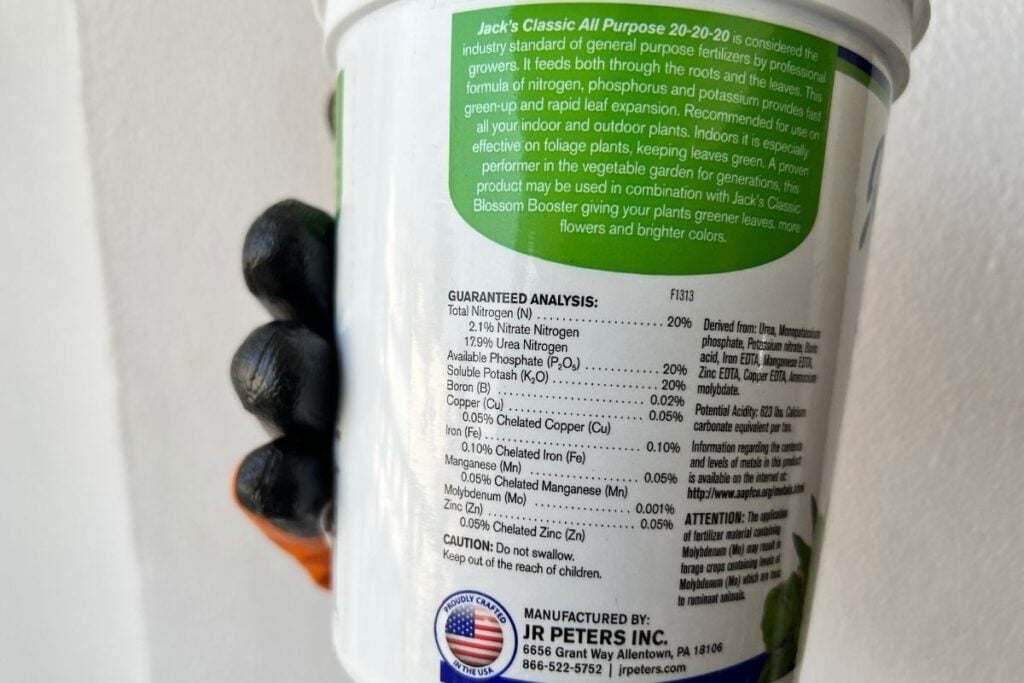
Improper nutrition is one common reason behind tulip bulbs not growing. Tulips are not heavy feeders and need fertilization only once a year when planted in the fall.
Overfertilization and under-fertilization can both cause your plants to stop their growth. Overfertilization can burn their root system.
The salts in the fertilizer will absorb all the moisture from the soil, causing yellow leaves, brown tips on leaves, and stunted growth.
A nutrient-less soil can also block the growth of your tulips.
Although tulips need little fertilizer, not providing them with any will not provide enough energy for the bulbs to grow correctly. Therefore you need to provide them with sufficient nutrition to grow properly.
Pest and diseases
Tulips can suffer from pest infestations. If the infestation is drastic, your tulips can stop growing.
The pests will suck the sap from the leaves and stems, making your tulips weak and fatal. Pests like aphids, bulb mites, snails and slugs, and caterpillars can be the reasons for their poor health.
Sometimes, it can become difficult to detect this problem since pests like mites can attack the bulbs below the soil’s surface.
The leaves of tulips can become deformed, yellow on top, stunted, or bumpy underneath in case of pest infestations.
Stress
If your tulips are under stress, then they might stop their growth. They might get stressed due to several reasons like transplantation, strong wind, cold weather, heavy rainfall, too hot or humid conditions.
These changes will interrupt your tulips’ growth and development and lower their health which eventually stunts their growth. A sudden change in atmosphere will make it difficult for them to adjust and create stress.
How do I make my tulips grow again?
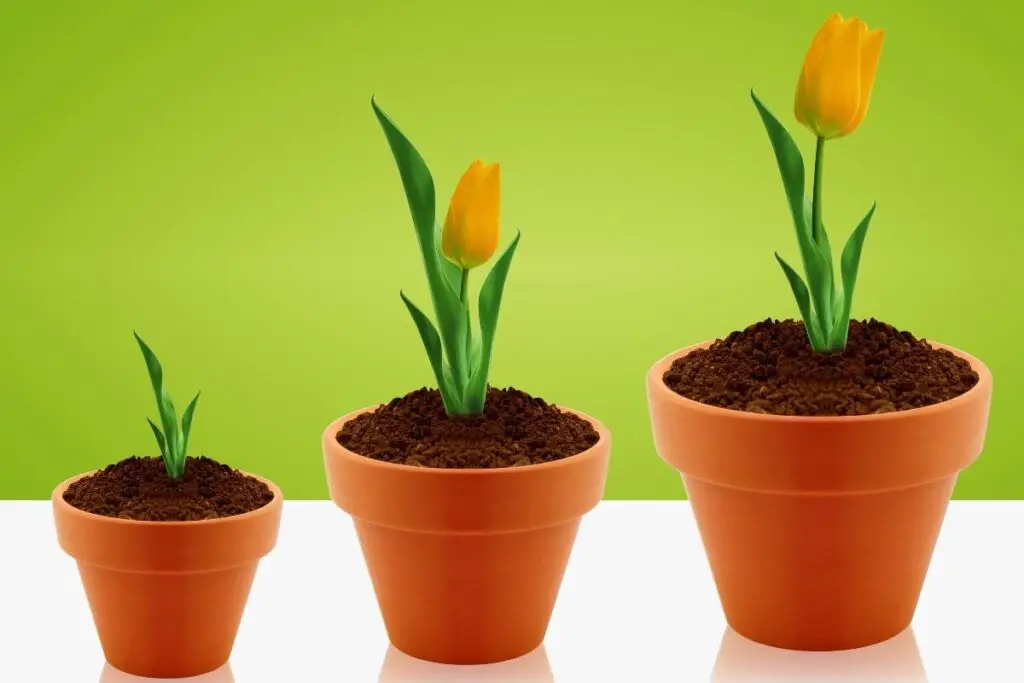
If you want your tulips to thrive again, you must fulfill all their necessities. Here are some care tips to understand this in a better way.
Fix the light
You need to provide your tulips with an adequate amount of sunlight if you want them to grow.
Plant them in the brightest location of your garden, where they will receive bright, direct sunlight for a minimum of 6 hours every day.
However, during the hottest parts of the day, protect your tulips from scorching sunlight by providing them with partial shade and water to keep them moisturized.
Choose a shady site or one with morning sun for planting tulips in warmer regions.
If you find any obstacles blocking the light, try to remove them. Tulips grow best in garden beds, near shrubs, or under trees, so choose the planting location accordingly.
Prune the dried leaves of tulips, keep the soil moist, and the sun will take care of the rest.
Also read: How Much Sunlight Do Tulips Need? (Tulip Light Needs)
Maintain a proper watering schedule
Start understanding your tulips’ moisture requirements before preparing a watering schedule for them.
Start watering your tulips with an inch of water once a week during their growing season and avoid watering in the dormant period. After the flowering season, provide them with just ½ inch of water per week.
Always check the soil before watering your tulips. Water them only if you feel the top 1-2 inches of soil has dried up.
If you have underwatered your tulips, water them deeply and in every gap of the soil for a few days and keep checking the moisture level of soil regularly until the plant recovers a little bit.
If you have overwatered your tulips, stop watering, leave them under the sun, and wait for the soil’s top inch to get dry. If your tulips are still not recovering, you need to transplant them to a sunnier location to save them.
Also read: How Often Do Tulips Need To Be Watered? (Tulip Watering Needs )
Choose the correct soil mix
Choose a soil mix for tulips that will drain excess water and retain enough moisture. The soil should contain a sufficient amount of nutrients to develop a healthy roots system.
Also, the soil should be light and loose so that the roots will get enough space to breathe.
Ensure the soil pH level for tulips is 6.0 to 7.0 on the pH scale. If the pH of the soil is too alkaline, you can mulch it by applying peat moss, animal manure, or pine needles to make it neutral.
If it is too acidic, you can apply limestone powder to make it neutral.
An ideal soil mix for tulips is:
- Manure Compost: 30%
- Coconut peat: 20%
- Potting soil: 30%
- Sand: 20%
You can use the above soil recipe for healthy and happy tulips.
Also read: What Kind Of Soil Is Good For Tulips? (Best Soil Mix)
Ensure deep planting
You can plant tulip bulbs 2 to 3 times their size. In gardens, you should plant your tulip bulbs at least 5 to 6 inches deep in the soil.
Planting deeply in the soil will give them a firm base, making them less likely to be hit by windy weather.
Also read: When To Plant Tulips Seeds? (Guide As Per Your Zone)
Provide adequate fertilizer
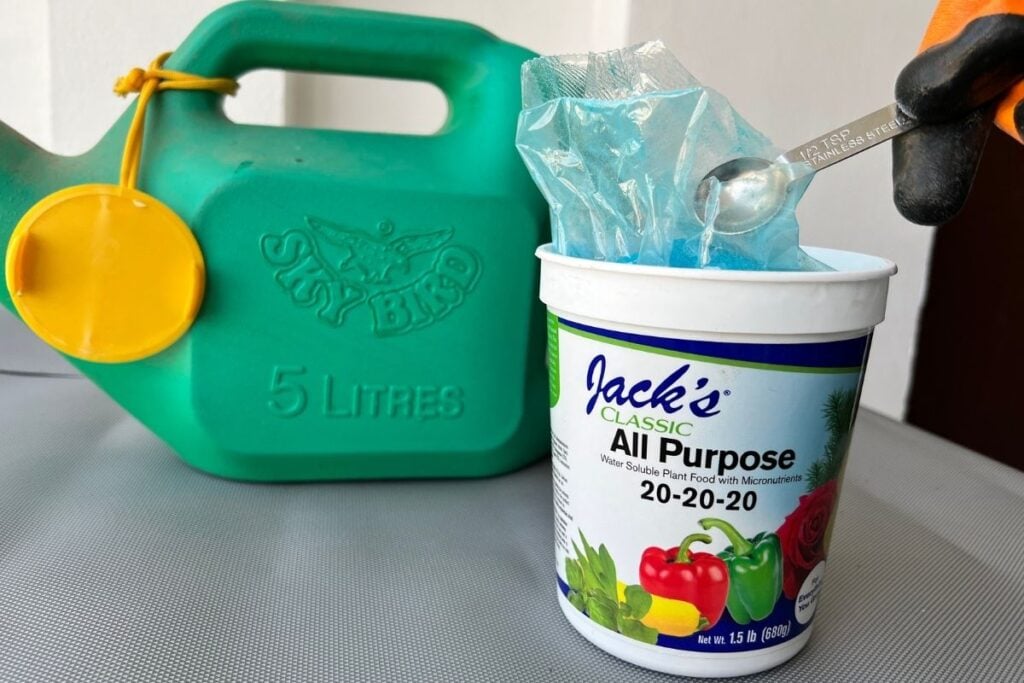
Tulips will need fertilization to remain healthy and appealing. They should be fertilized each year during fall when they are planted. If you forget to fertilize them while planting, you can later scratch the top layer of soil and add fertilizer.
Choose a fertilizer that will contain all the essential nutrients like nitrogen, phosphorous, and potassium incorrect ratio.
Use a well-balanced slow-release fertilizer with a nutrient ratio of 10:10:10.
A slow-release fertilizer will break down all the nutrients in small amounts without creating the problem of over-fertilization. Also, you can go for organic fertilizers like bone meal, compost, greensand, etc.
Avoid using granular and liquid fertilizers as they can burn your tulip bulbs due to high chemical reactions. If you have over-fertilized your tulips, you can take the following steps:
- Prune the already damaged leaves and stems.
- Flush the soil with water thoroughly to remove the excess fertilizers.
- You can remove the excess fertilizers by scratching a few inches of soil.
Also read: What Is The Best Fertilizer For Tulips? (Organic+Inorganic)
Treat pest infestations
Tulips do not get attacked by pests. But if it got infected, it means that you haven’t cared for your plant correctly.
Maybe they are not getting sufficient light, and overwatering too will attract pests towards it. You can adopt some ways to remove pests such as:
- Rinse the plant with a strong spray of water to separate the pests.
- Use neem oil by mixing 1 teaspoon neem oil with 2 to 3 cups of water and spraying the solution all over the plant.
- You can use horticulture oil or insecticidal soap to remove pests.
- Use pesticides or insecticides as per the pest type and follow the directions properly in the label before applying it.
Also read: Bugs On Tulips: (Common Pests, Identification+How To Get Rid)
Save them from stress.
One primary reason for stress in tulips is relocation. Be very careful with your tulips without causing physical damage to them whenever you transplant them.
On scorching days, apply organic mulch on the soil surface and provide them with a partial shade like a tree’s canopy.
On freezing days, reduce watering and ensure they get enough direct sunlight. Also, prune back the damaged parts of the tulips.
Source: Wikipedia, North Dakota Stae University, The Royal Horticultural Society.
